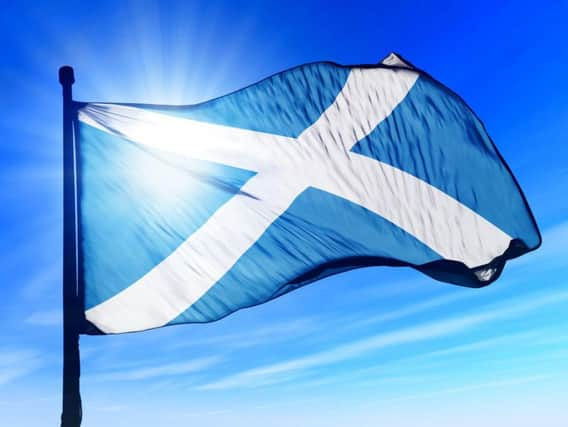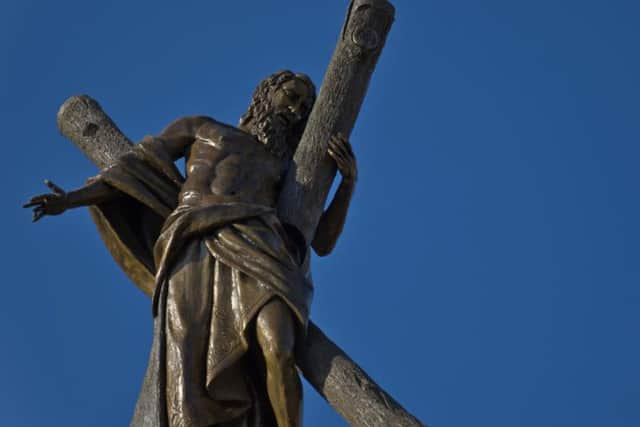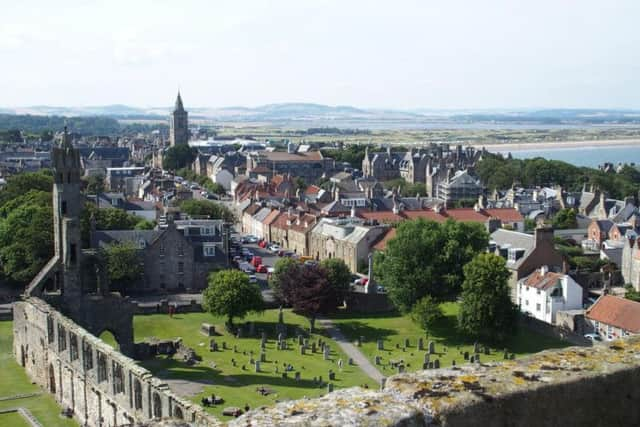St Andrew's Day 2019: 5 surprising facts you didn't know about Scotland's patron saint


However, since 2006, it has been designated as an official bank holiday, giving us more reason than ever to celebrate.
And you might be surprised to discover that Saint Andrew is not just the patron saint of Scotland - he’s honoured the world over.
Advertisement
Hide AdAdvertisement
Hide AdHere are some other surprising facts about Saint Andrew you might not have known - and the day we celebrate in his honour.


He’s not just Scotland’s patron saint
St Andrew officially became Scotland’s patron saint in 1320, when the Declaration of Arbroath affirmed Scotland’s status as an independent nation.
But he’s not just Scotland’s patron saint. Saint Andrew, who was born in Israel between 5 and 10 AD, holds the same honour in Amalfi, Barbados, Greece, Poland, Russia, Romania and Ukraine.


He was a fisherman who converted to Christianity and became one of Jesus Christ’s original disciples, so perhaps it's no surprise he's also the patron saint of fishermen and fishmongers. Why he's the patron saint of singers and pregnant woman and is believed to offer protection against sore throats and gout is not so clear.
He never came to Scotland... but parts of him did
Advertisement
Hide AdAdvertisement
Hide AdSaint Andrew never actually visited Scotland during his lifetime but his kneecap, arm and fingerbone did arrive in Scotland - among other relics - after his death.
Fourth century monk Saint Rule was instructed to take them and sail west until he became shipwrecked and to establish a church wherever he landed.
He ended up in the small coastal village of Kilrymont, which we now know as St Andrews. St Andrews Cathedral was built to house the relics in 1318, but both were destroyed during the Scottish Reformation.
To help restore the sanctity of St Andrews, the Archbishop of Amalfi donated a piece of the saint’s shoulder blade, ensuring that a part of him would remain in Scotland.
His brother was the first Pope
Advertisement
Hide AdAdvertisement
Hide AdAndrew’s brother, Simon Peter, worked with him as a fisherman in Galilee until they both became disciples of Jesus as two of the Twelve Apostles.
Some accounts have Andrew bringing Peter to Jesus, while others say that Peter witnessed Jesus perform a miracle while he was fishing, which convinced him of his divinity.
He is recognised as the first bishop of Rome, with each subsequent Pope named as the successor of Saint Peter.
Whether or not Peter ever actually went to Rome is also a matter of some debate.
The Scotland flag takes its cross from his symbol
Advertisement
Hide AdAdvertisement
Hide AdLike many of Jesus’ disciples, Andrew was ultimately executed for his beliefs, becoming a martyr for his refusal to denounce Christ.
However, when it came time for him to be crucified, he requested his cross be turned diagonally, forming an “X” rather than a “T”.
He did not feel worthy of the same death as Jesus Christ, and wished for his cross to reflect this.
He was crucified in Greece on a slanted cross as per his request on 30 November 60AD, from which we take both the date of his special day, and the cross on the Scottish flag.
St Andrew's Day was first celebrated in America
Advertisement
Hide AdAdvertisement
Hide AdIt was not until the 18th century that St Andrew’s day became an annually celebrated event, and the practice actually began over in the United States.
In Charleston, North Carolina, a group of well-off Scottish immigrants formed the St Andrew’s Society of Charleston in 1729 in an attempt to reconnect with their Scottish heritage, while also raising money for charity.
Their 30 November parties quickly became popular, and other branches began springing up all over the USA, eventually arriving back on Scottish shores.